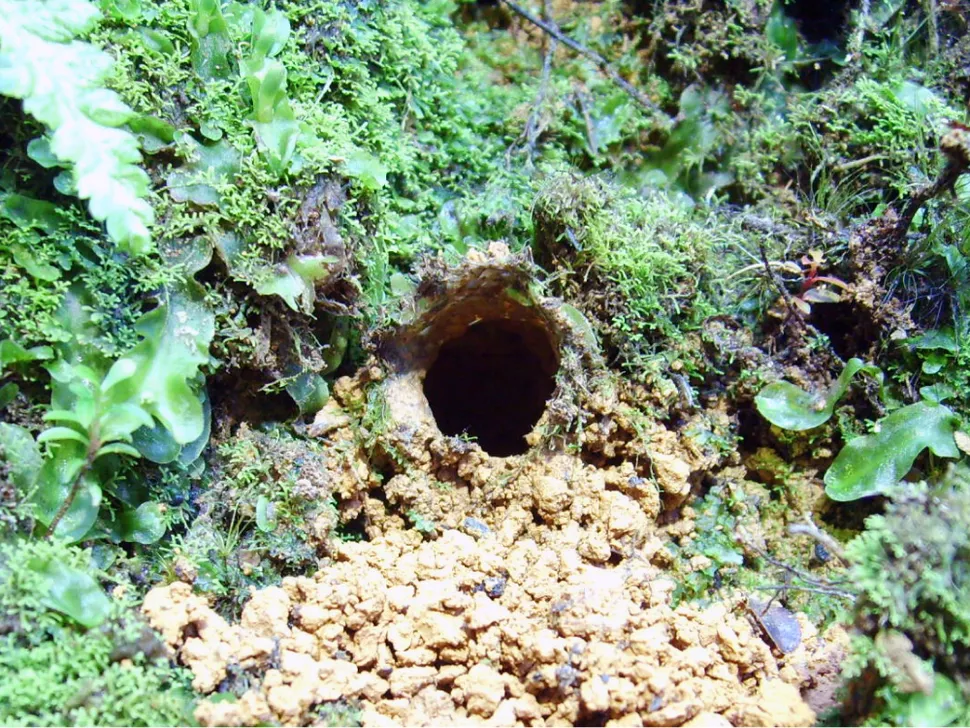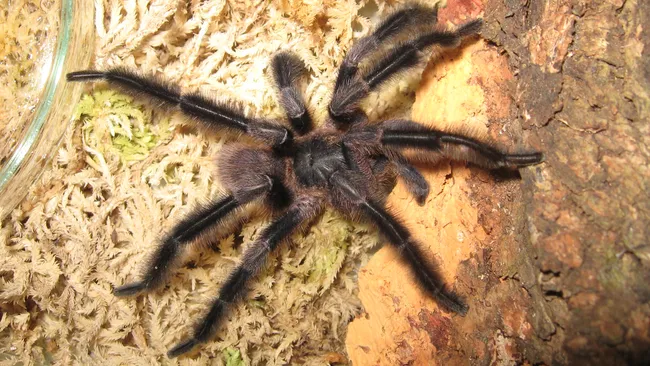Name: Hairy Giant Tarantula (Trichopelma grande)
Habitat: Western Cuba
Diet: Insects, lizards, frogs, and small reptiles
Why It’s Amazing:
For those who aren’t afraid of arachnids, the discovery of the Trichopelma grande is an exciting find. This newly identified “giant” tarantula stands out because it’s not only bigger and hairier than others in its genus, but it also features long, fluffy “feather-duster” legs.
First discovered in 2008 in Viñales National Park, Cuba, a biodiverse region, only four specimens have been found so far: three adult males and one juvenile male, all residing in underground trap-door burrows.

While the Trichopelma genus consists of 23 species, all known for their small size, T. grande is the largest, with a body length ranging from 0.33 to 0.44 inches (8.4 to 11.2 millimeters). Its most distinguishing characteristic is its exceptionally hairy legs, a trait typically seen in tree-dwelling, or arboreal, tarantulas, making it unique among ground-dwelling species.
The Purpose of Its Hairy Legs:
Researchers suggest that the long, fluffy legs could serve a defensive purpose against predators like birds or snakes. According to David Ortiz, lead researcher from Masaryk University, the leg hairs may be particularly useful for males, who are more mobile than females and often wander outside their burrows. Though the exact reason is unclear, it’s believed that the hairier the legs, the more effective the deterrence.
The hairy legs may also heighten the tarantula’s sensitivity to air currents, helping it detect both predators and prey. Being larger also makes it easier for the tarantula to catch its food, which includes insects, frogs, lizards, and other small reptiles. Thankfully, this species is not considered dangerous to humans, as their bite is likely milder than a bee sting.
Nomadic Males:
Unlike the females, which remain hidden in their burrows, male tarantulas of this species are nomadic and leave their homes in search of mates. However, no female T. grande have been discovered so far, making their behavior still a mystery.
Threats to Their Habitat:
Despite their unique characteristics, these tarantulas face threats from human activity and natural disasters like hurricanes. The Viñales National Park, where they were found, is increasingly disturbed by logging, with only small forest patches remaining intact in the region’s mogotes (hills) and sierras.
Ortiz emphasizes the need for further study of this remarkable species, as it faces increasing risks in its already fragile environment.
